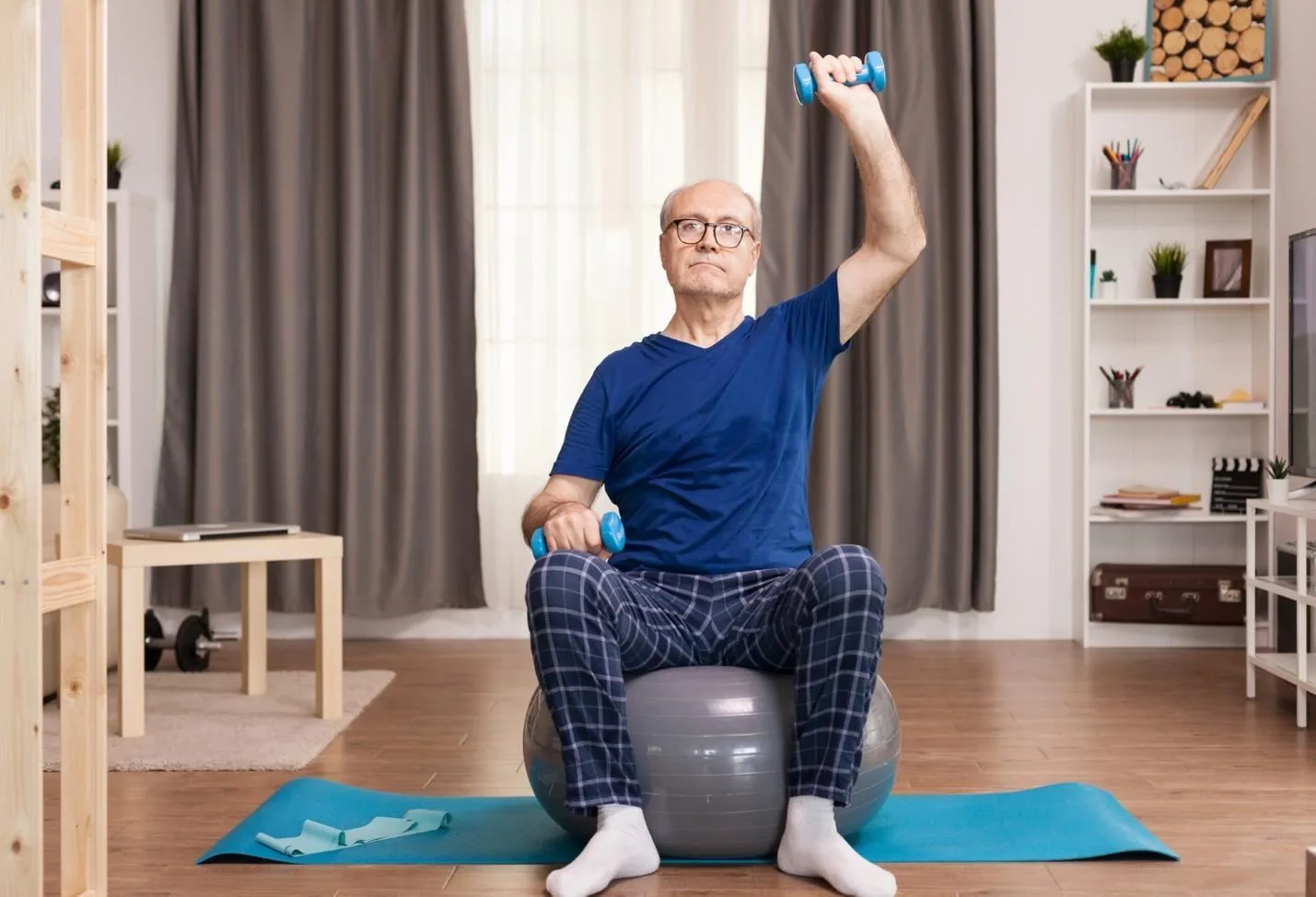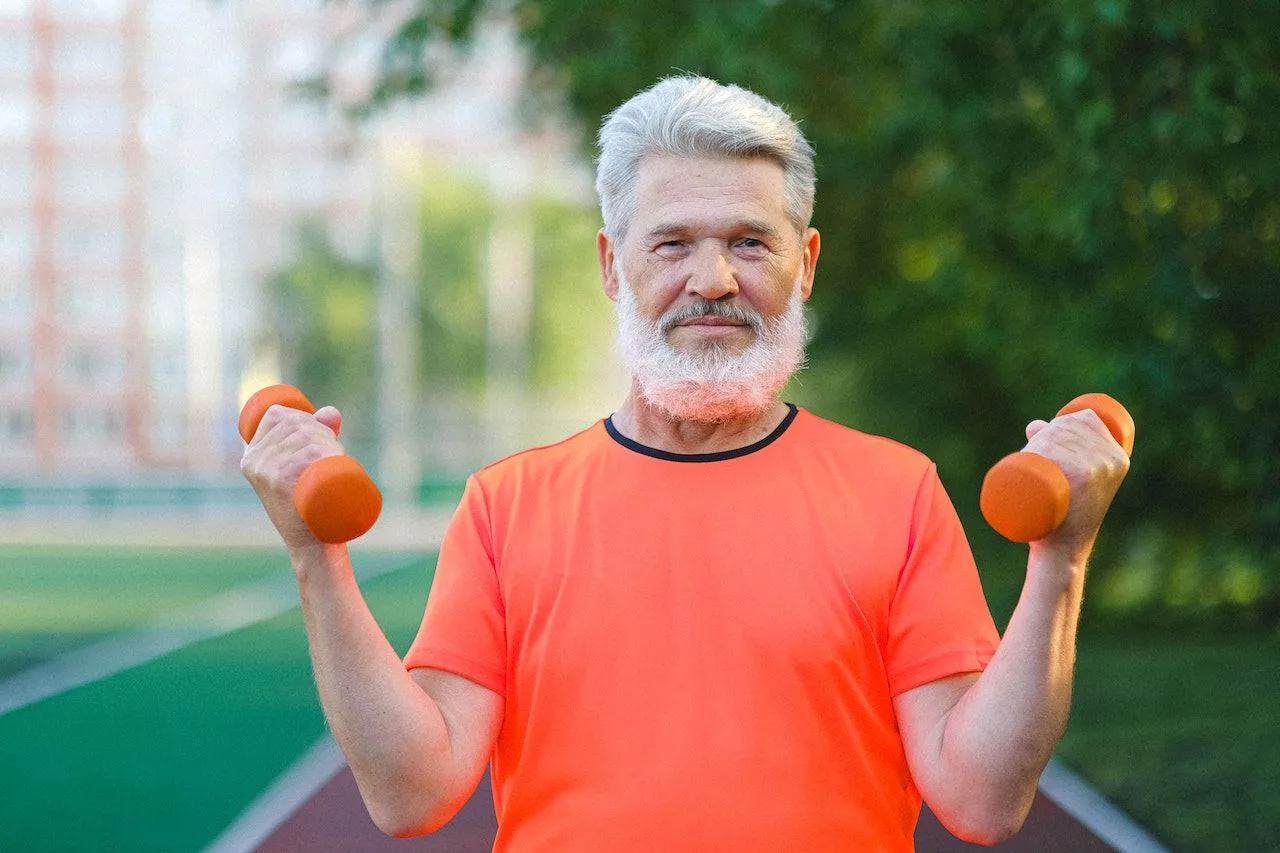Thinking about pumping some iron? Why adding some weights to your workout routine may not sound appealing, you may be surprised to learn that doing so can add years to your life. In fact, for seniors, lifting weights may be the key to protecting their healthspan.
Older Adults Pumping Iron Can Boost Longevity
In a study published in the British Journal of Sports Medicine, researchers set out to evaluate the benefits of exercising with weights. To do this, the researchers recruited participants from the Prostate, Lung, Colorectal, and Ovarian (PLCO) Cancer Screening Trial. The trial had begun in 1993 and it included 154 897 men and women. The participants were aged 55 to 74 years old from 10 different U.S. cancer centers. For the purpose of the study, participants revealed whether they had exercised with weights over the past year, and if so, how often. The answers ranged from less than once a month to several times a week.
For the final analysis, 99 713 participants were included with 71 being the average age during the study. Also, during the course of the study period, 28 477 of the participants died.
In regards to their fitness habits, around 1 in 4 (23 percent) of people admitted to some weight lifting activity, with 16 percent sharing that they regularly exercised with weights between one and six times a week. The data also found that almost 1 in 3 people (32 percent) met the guidelines for physical activity, with 8 percent exceeding the guidelines by exercising more than five hours a week.
Weight Lifting Lowers Risk of Death
“Older adults who participated in weight lifting exercise had significantly lower mortality before and after factoring in aerobic exercise participation, and importantly, those who did both types of exercise had the lowest risk.”, lead author, Jessica Gorzelitz, PhD

According to the study’s findings, older adults who partook in weight training, without engaging in aerobic activity, reduced their risk of death by up to 22%. How many times does one have to lift weights in order to reap these benefits?
Well, the study found that the rate depended on the number of times one lifted weights during the week. For instance, lifting weights once or twice a week was linked to a 14% reduced risk. The researchers noted that the percentage increased the more times weights were used.
As for those who avoided weights but still engaged in aerobic exercise, their risk of mortality was lowered by 34%. That said, the researchers noted that the biggest reduction was observed in those who met the recommended weekly amounts of aerobic activity and also chose to lift weights once or twice per week. According to the study, those who did both aerobic exercise and weight lifting experienced a reduced risk of 41% to 47%.
Why does lifting weights boost longevity?
The researchers did not explain how lifting weights can improve health in their study. However, there are a few ideas as to why pumping iron can be so beneficial.
For one, strength training has been found to be quite effective against belly fat. Now, while you may think of yourself assured enough not to worry about belly fat, the reality is that it’s something that can be detrimental to your health. Belly fat has been associated with an increased risk of chronic diseases like heart disease and certain types of cancers. Therefore, it is important to be conscious of the amount of fat your abdomen carries.
Strength training can also decrease one’s risk of falls. As falls are the leading cause of injury-related death among adults aged 65 and older, it is essential to find ways in which seniors can mitigate their risks.
Strength training has also been found to improve and support bone health. This is especially critical for people as they get older. In fact, one study found that faster bone loss may increase the risk of death in seniors. Therefore, engaging in activities that involve weights may help to keep their bones healthy.
Takeaway
Despite their findings, the study’s researchers acknowledge that further and more diverse studies are needed. In any case, they recommend that older adults regularly exercise even if it is unusual health and fitness classes, as long as it includes strength training in their routines.

Aerobic activities can include brisk walking, dancing, swimming, running or jogging, and even cycling. Also, strength training is not just limited to weights. If you find that you can’t partake in deadlifts and overhead dumbbell presses, push-ups, bird dog and glute bridges are just as effective. That said, it is important to check with your doctor before beginning any new exercise program.
References
Gorzelitz, J., Trabert, B., Katki, H. A., Moore, S. C., Watts, E. L., & Matthews, C. E. (2022). Independent and joint associations of weightlifting and aerobic activity with all-cause, cardiovascular disease and cancer mortality in the Prostate, Lung, Colorectal and Ovarian Cancer Screening Trial. British journal of sports medicine, bjsports-2021-105315. Advance online publication. https://doi.org/10.1136/bjsports-2021-105315



![women [longevity live]](https://longevitylive.com/wp-content/uploads/2020/01/photo-of-women-walking-down-the-street-1116984-100x100.jpg)










